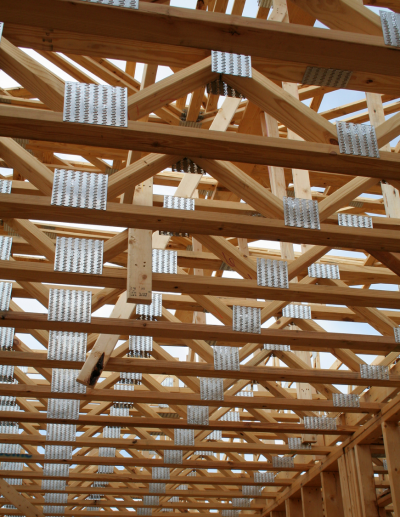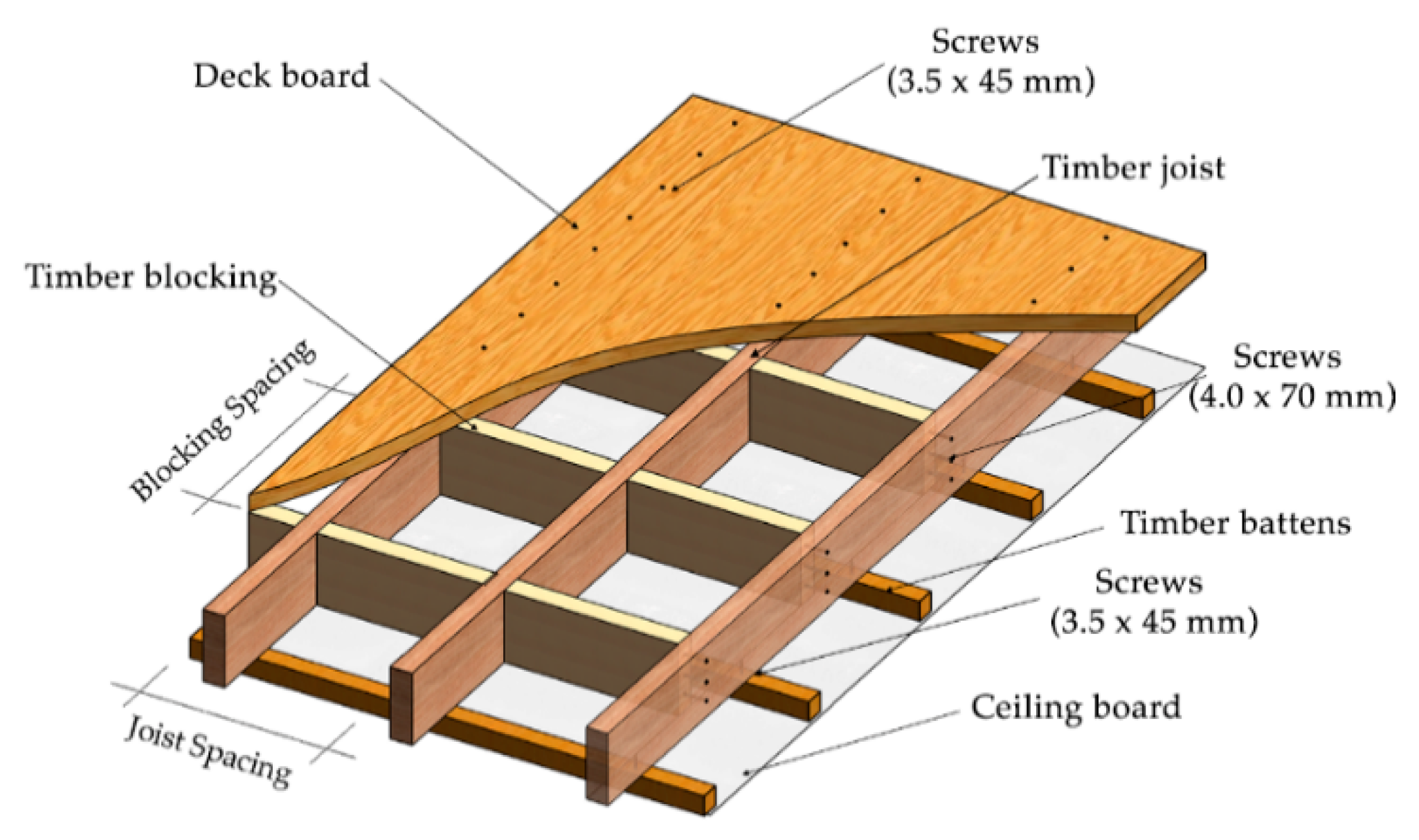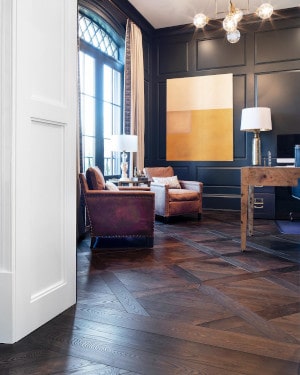Wood Floor Vibration Design Criteria
Vibration of light-frame wood floor construction can be a significant occupant comfort issue. Empty floor f 15 Hz Furnished room f 14 Hz General Vibration Design Principles Occupants are very sensitive to vibrations in the range of 7-10 Hz.
The objective is to determine whether a floor meets the serviceability requirements for vibration using conservative values or whether a more detailed analysis is warranted.

Wood Floor Vibration Design Criteria. This Technical Note covers the design of concrete floor systems for vibration with an emphasis on simple and expeditious first estimates for a floors vibration response. For the concrete designs punching shear has been checked assuming a realistic minimum sized column. Review floor vibration design parameters through a systems rather than product-based approach.
Use of the criterion for floor systems with a first natural frequency above about 10. D Vibration is so severe that makes occupants ill. It deals with the human perception of vibration and the criteria by which it is measured.
All floor vibration criteria have two parts. The criteria apply to vibration as measured in the vertical and two horizontal directions. General office spaces shall be designed to meet a recommended floor vibration velocity limit of 400 micrometers per second Residential Day Criterion Curve see Figures 1 2.
A Vibration though present is not perceived by the occupants. Far as design is concerned. The floor designs have been checked for durability under mild exposure conditions and for 1hr fire resistance.
C Vibration annoys and disturbs. Unacceptable vibrational performance of some long span wood floors reveal that the L360 live-load deflection criterion is not alone sufficient in designing a wood floor for 100 percent acceptable vibrational performance. However achieving acceptable levels of floor vibration is not a code requirement.
While this type of floor is designed to support people furniture and large appliances certain movements can cause a floor to vibrate over time. But why learn the new criteria. The 15 mm has been relaxed from 1 mm as suggested in Table C241 of NZS 4203 SNZ1992.
The criterion was developed using field measurements of approximately 100 floor systems mostly in the frequency range of 5-8 hz. Criterion can be approximated by a linear decreasing ramp function having a magnitude of 600 lbs and a duration of 50 milliseconds. Annoying vibration for occupant-induced footfalls is a serviceability limit state that must be considered in the design of structures including residential wood floors.
With the introduction of engineered joist products such as I-joists I-J and parallel-chord trusses spans used to. While this type of floor is designed to support people furniture and large appliances certain movements can cause a floor to vibrate over time. Furthermore all criteria must be calibrated and thus are empiri-cal in nature the necessary funda-mental studies of human response to low frequencyvery low ampli-tude vertical vibration have not been done.
Discuss criteria for acceptable floor vibration performance of mass timber systems in varying occupancies including multi-family and laboratories with sensitive equipment. Classrooms and computer lab spaces shall be designed to meet a recommended floor vibration velocity limit of 200 micrometers per second Residential Day. In the United States floors in wood buildings are currently designed according to strength and deflection criteria under static uniformly distributed loads.
The criteria takes the form of a set of one-third octave band velocity spectra together with the International Standards Organization ISO guidelines for the effects of vibration on people in buildings. Wood framed floors are the most typical culprit of floor vibrations due to small deflections up and down as the joists are loaded and unloaded. The concepts of floor response and the different types of excitation produced by occupant induced vibrations.
Are not covered by this design guide. This is consistent with the deflections encountered within currently used timber floor joist span tables but is more restrictive than the dynamic serviceability requirements stated in AS 3623 SA1993. This publication provides guidance for vibration design of all steel-framed floor and building types.
Vibration in timber floors Eurocode 5 addresses the design of timber floors under the vibration aspects of Serviceability Limit State Design presented in Eurocode 5 BS EN 1995-1-12004. Recently proposed design methods addressing excessive floor vibrations require knowledge of the dynamic characteristics of the floor system such as the fundamental frequency or the root-mean-square acceleration a r m s. Demonstrate methods of designing mass timber floors for vibration and.
In theory joist designs or floor system designs that vibrate well above 7-10 Hz should be judged by the occupants as acceptable simply. Codes do not contain design criterion for controlling floor vibrations. B Vibration is perceived but does not annoy.
A prediction of the floor response and a human tolerance level. The design guide should not be applied to pedestrian bridges or other structures which. 232 Strength The floor designs have been checked to ensure they meet the Ultimate Limit State strength requirements in bending and shear.
The design and assessment methods for floor vibrations are related to human induced resonant vibrations mainly caused by walking under normal conditions. Wood framed floors are the most typical culprit of floor vibrations due to small deflections up and down as the joists are loaded and unloaded. Despite the individuality of each case vibration is identified as one of the four main criteria groups for consideration under Serviceability Limit States SLS design with a emphasis being placed on vibration in floors.
As such it is possible to design a code-compliant wood floor structure that produces annoying or unacceptable levels of vibration due to standard foot traffic. Machine induced vibrations or vibrations due to traffic etc.

Tabarka Studio Airpark Scottsdale Az Flooring Inspiration Flooring Wood Floors

Technical Analysis Of The Renovation Works Of The Wooden Palace Floors

Gallery Of Flick House Delution 19 Brick Architecture Architect House House Exterior

Deflection Test And Modal Analysis Of Lightweight Timber Floors Sciencedirect

Das Mischen Von Bodenmaterialien Auf Einer Anderen Ebene Mit Komplizierten Kuchendekoration Floor Design House Design Flooring

Target Vibration Floor Tile Design Modern Tile Designs Floor Pattern Design

Pdf Vibration Serviceability Of Timber Floors In Residential Construction
Https Www Woodworks Org Wp Content Uploads Wood Solution Paper Mass Timber Floor Vibration Pdf

Lav Ish The Bath Gallery Hardwood Floor Design House Flooring Diy Flooring

What Methods Exist For Checking Floor Vibration Of Light Frame Wood Structures Woodworks

Facet House By Platform 5 Architects Perfect Combination Of White And Wood And The Tile Unique Flooring Floor Design Wooden Floor Tiles

Mi Favorito The Estate Of Things Flooring Floor Design Wood Floors

Rethinking Timber Buildings Arup By Ecopavilions Issuu

40 Spectacular Floor Design Ideas Bored Art Wood Floor Design Floor Design Wood Floor Pattern

Applied Sciences Free Full Text Damping Assessment Of Lightweight Timber Floors Under Human Walking Excitations Html

Style Glossary Parquet Floors Wood Floor Pattern Floor Patterns Parquet Flooring

Guide To Non Toxic Flooring 2021 My Chemical Free House

Technical Analysis Of The Renovation Works Of The Wooden Palace Floors

Eclipse Wood Parquet Flooring Wood Parquet Wood Parquet Flooring Wood Floor Design
